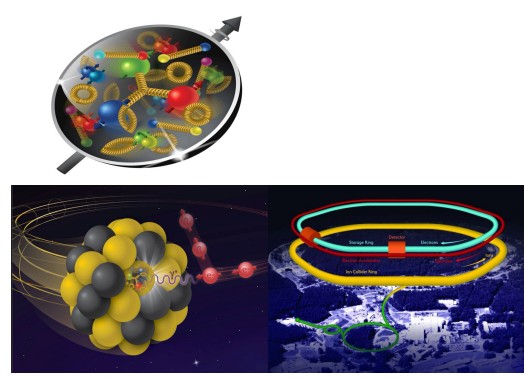Experimental High Energy Physics
The research activity in this area of Physics aims at the experimental study of elementary particles, the fundamental forces between them, the cross sections of the processes in which they are involved and the study of hadronic matter states existing in nature. These studies are conducted by mean of colliders. The research groups of the Department of Physics and Astronomy that are active in this research field use the LHC from CERN and the RHIC from BNL for their experiments and make use of the close collaboration of the INFN Section of Catania and other Italian and foreign institutions.
ALICE

Faculty: R. Barbera, P. La Rocca, F. Riggi
ALICE is one of the largest experiments in the world devoted to the study of the Quark-Gluon Plasma (QGP), a state of matter supposed to be existed in the very first moments of the life of our Universe after the Big Bang. To this aim, ALICE studies ultra-relativistic collisions provided by the Large hadron Collider at CERN. During the years ALICE has confirmed the nature of QGP as an almost-perfect liquid, observing the formation of hot hadronic matter at unprecedented values of temperature and energy density.
Compact Muon Solenoid

Faculty: S. Costa, A. Tricomi
The CMS experiment is one of the general-purpose experiments at LHC. The CMS Collaboration comprises 4300 people from 232 Istitutes in 53 Countries. The Group at DFA of UniCT collaborates with CMS since 1996, and has contributed significantly to its achievements. The main goals of the experiment are: the study of particle physics at the TeV energy scale; after discovery, detailed study of properties and behavior of the Higgs boson; search for new physics beyond the Standers Model of elementary particles, such as SuperSymmetry (SuSy), or new extra space-time dimensions.
Electron Ion Collider (EIC)

Faculty: C. Tuvè, G. Verde, C. Sutera
The Electron Ion Collider (EIC) is the world's most powerful microscope for studying the "glue" that binds the building blocks of visible matter. The EIC will be a particle accelerator that collides electrons with protons and nuclei to produce snapshots of those particles’ internal structure—like a CT scanner for atoms. The electron beam will reveal the arrangement of the quarks and gluons that make up the protons and neutrons of nuclei. The force that holds quarks together, carried by the gluons, is the strongest force in Nature. The EIC will allow us to study this “strong nuclear force” and the role of gluons in the matter within and all around us. What we learn from the EIC could power the technologies of tomorrow. The accelerator will built at Brookhaven Laboratory (USA) and will be ready in 2030. The design of the detectors, simulations and theoretical studies are being carried out.